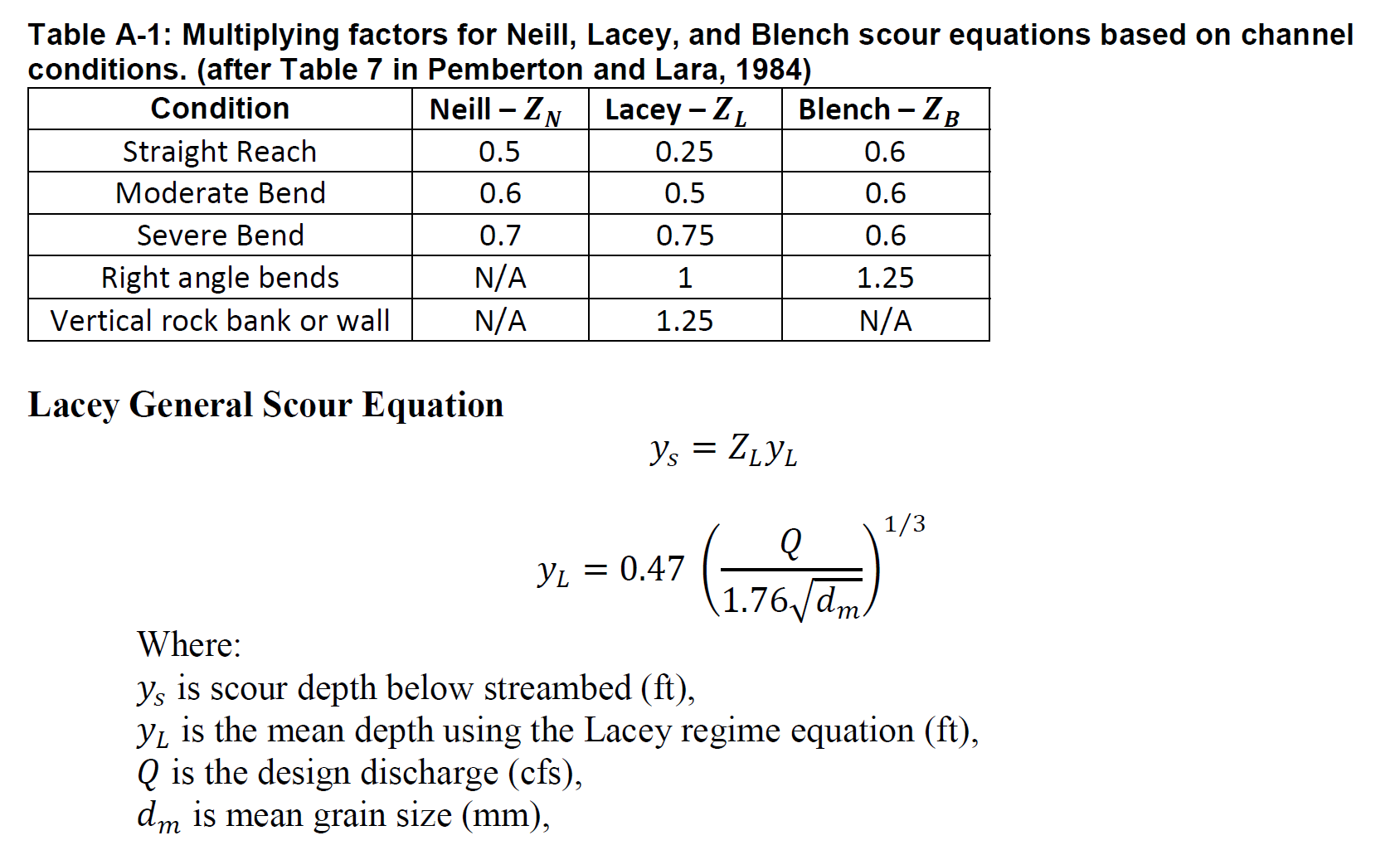The Lacey Method has a similar form to Blench and Neill and, like them, it was popularized by US Bureau of Reclamation guidance in Pemberton and Laura (1989) and then again in Baird et al, 2019.
It is based on silt data and should be used for silt channels.
The discussion below begins with the USBR forms of the equation and then describe Lacy's (1930) original work that they are based on.


Lacey's (1930) Theory Behind the USBR Equation
The method is based on data from Lacey (1930) which used data from silt channels in south and southeast Asia (Madras, Punjab, and Myanmar) as well as Egypt. He developed two general equations for silt bed rivers. The second and third equations interact to compute a stable hydraulic depth, which the scour equations compare to the existing depth; the difference is general scour. He rearranged this fit to form his second general equation:
Lacey's First General Equation

Lacey's Second General Equation
The second general equation is a semilog fit between velocity and a product and the "silt factor". The transporting power of silt channels was proportional the sixth power of the velocity.

Lacey's Third General Equation

By inserting the second general equation into the third general equation into the Hydraulic Radius equation (and with a little algebra), these equations take the familiar form in Pemberton and Lara (1984) which we use in HEC-RAS with a little rearranging.

References:
Baird, D., Sixta, M., Foster, M., Neff, K. (2019) Guidelines for Evaluating Pipeline Channel Crossing Hazards to Ensure Effective Burial, US Bureau of Reclamation, Technical Service Center Manuals and Standards, 209 p.
Lacey-1930.pdf Stable Channels in Alluvium
Pemberton and Lara (1984). Computing Degradation and Local Scour, Technical Guideline for Bureau of Reclamation. Denver, CO: Bureau of Reclamation, Engineering and Research Center.